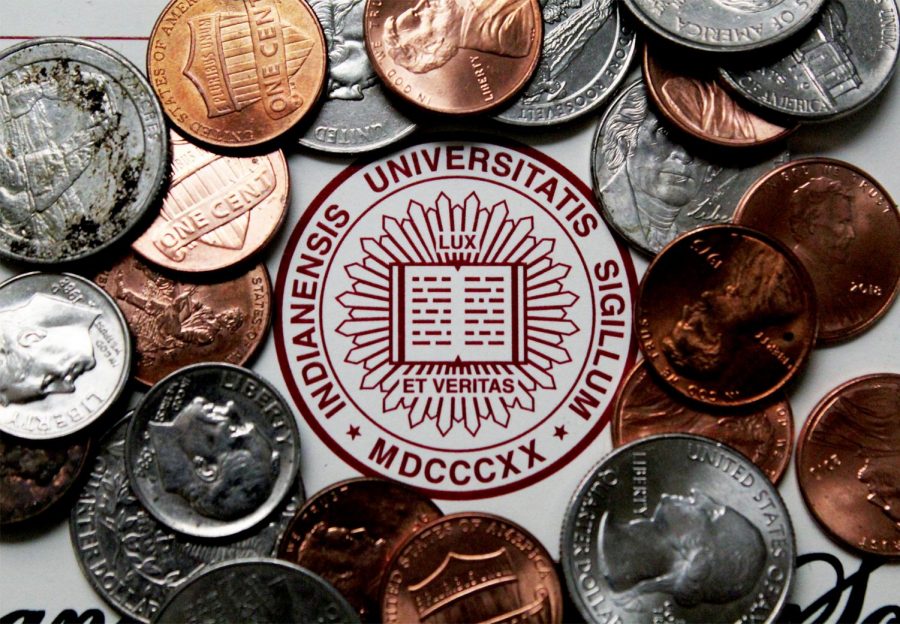College students preparing for the future
Business advisors give their advice on how college students should prepare financially
April 1, 2019
College students are trying to balance not only how to get a degree, but how to afford a degree. With over $1.5 Trillion in student loan debt, the average debt of a student from 2016 class is $37,172 according to financial company Make Lemonade, in a 2018 Forbes article by Zach Friedman.
For students at IU Southeast and inside the Indiana University campuses, many are not only planning for life after college, but budgeting while in school.
Thomas Keefe is a professor emeritus of business with IU Southeast. As a graduate of Cornell, Keefe helps students with loan management and budgeting.
“Plan it out,” Keefe said. “Students need career and financial plans to support their career efforts. Students need to have a road map of the steps to their career goal, solid financial plans, and a network of contacts to tell them about the paths to know and the paths to skip.”
Credit Woes
Students often struggle with the pitfalls of credit cards, Keefe said, creating holes in their finances.
“Both credit card debt and student loan debt have caused problems for many. According to the Federal Reserve Bank of New York, those most likely to default on student loans are students who dropout of school early and never get a degree,” said Dr. Keefe.
To stay afloat as a college student financially, focusing on being strict with your budget can produce positive results.
“My former students have told me to avoid this problem, have a financial plan in place, be frugal, and budget each semester. Those that didn’t, sometimes relied on credit cards for what they needed,” Keefe said.
Credit cards have been an issue for students in college for a long time, often times not knowing the ramifications of debt.
“For some, credit card applications work like withdrawal slips. For these students, when their student loan money runs out before the end of a semester and they used a credit cards to eat and pay bills. Many students in this situation ended up having as their motto, ‘I owe, I owe, off to work I must go,’ dropping out and taking any job they could find to pay credit card bills,” Keefe said.
Budgeting
With those lessons, Dr. Keefe helped to develop a budgeting system, taught by Professor David Baird, lecturer of economics at IU Southeast.
“I give all of my W100 students an excel spreadsheet that Dr. Keefe helped to create,” Baird said.
Some of the other resources Baird and Keefe advise students use are the adult student center, along with the financial literacy courses at IU Southeast.
“The school of business at Indiana University Southeast offers financial courses, and all of my W100 and all … E201 courses contain personal finance segments,” Baird said.
The number one issue Baird sees for students is that they don’t have a plan.
As far as budgeting preparation, here are some tips and tricks mentioned by Baird.
“Learn to live on a budget, understand what stuff costs, and pay cash for stuff,” Baird said. “Understand the costs of interests, debt, and understand the power of interest.”
College students preparing for the future often times are often trying to seek out advice on financial planning. Baird offers up a couple things to look out for.
“A misnomer for students is that having debt is okay, the ‘have to have it now’ mentality is another,” Baird said. “The number one investment for students to have is being debt free.”
Planning a Course Load
Students starting out their college experiences may look into jumping straight into major courses, trying to hit their career paths faster. Thomas Keefe advises students to be cautious in that vein.
“Take general education courses first. Not doing so has taught some students an expensive lesson,” Keefe said.
According to Data Point’s study with the Department of Education. A study on 25,000 college students showed about 30 percent of students change their major at least once within three years of enrollment.
“By jumping into upper-level courses too early in their academic careers, they found out later that changing majors is expensive. Every time a student changes their major, it adds significant time and cost to a college career. Meet with your IUS academic advisor on a regular basis,” Keefe said.
Another thing for students to keep an eye on is the idea of investing. With the popularization of money management and investing apps like Mint, Robinhood, Acorn, students are looking for advice to get ahead.
“For students to have success in the workforce it comes down to investing in your education, doing professional networking, and experience in jobs & internships to build up your resume,” Keefe said. “All too often, graduates found themselves stuck in jobs they didn’t like. As a colleague once told me, ‘If you don’t know where you are going, any old way will get you there.’ Choose a career that will create the lifestyle you want.”



